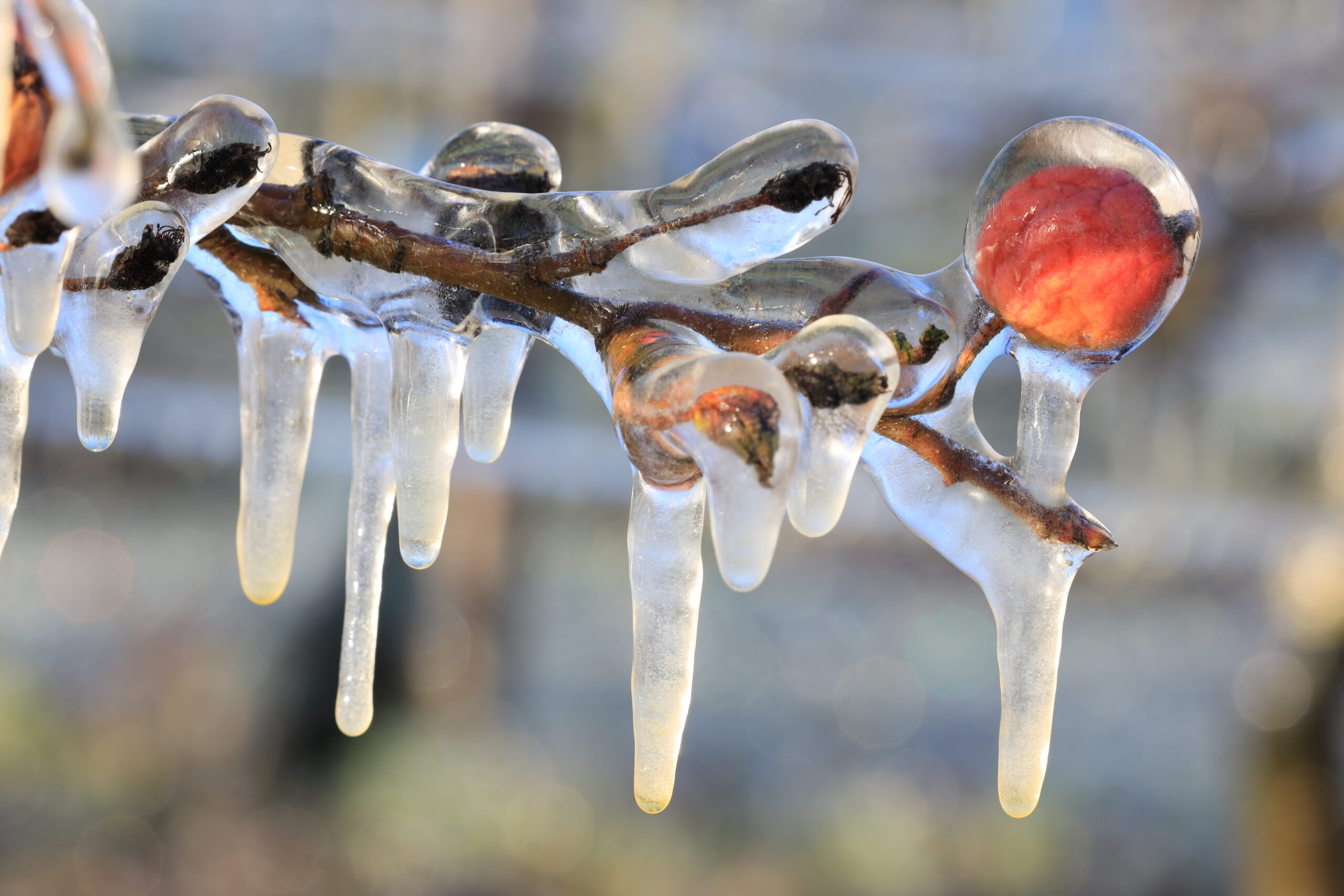
ANTI-FROST: IRRIGATE TO PRESERVE
Anti-frost irrigation systems are an effective method for protecting crops against overnight spring frost. These applications are particularly effective at preserving orchard crops.
Temperatures can drop several degrees below zero, in particular during the pre-dawn hours, thus compromising the systems’ productivity, especially if the plants are already at an advanced stage of vegetative development.
The reason is simple: when the temperature drops below zero, the water contained in the cells freezes, and as it expands it damages the walls, killing the cell itself and thus the plant tissue. This does not happen when the plant is in vegetative rest, because the lymph circulation is extremely reduced, and the organism is therefore able to tolerate lower temperatures.
The anti-frost irrigation technique consists of sprinkling the crops with water when the temperature drops below zero in order to form a layer of ice. The ice has a temperature of 0°C, and therefore insulates the plant from the cold air.
Anti-frost systems employ various techniques; those most commonly used are known as the over-head, under-head, and strip methods.
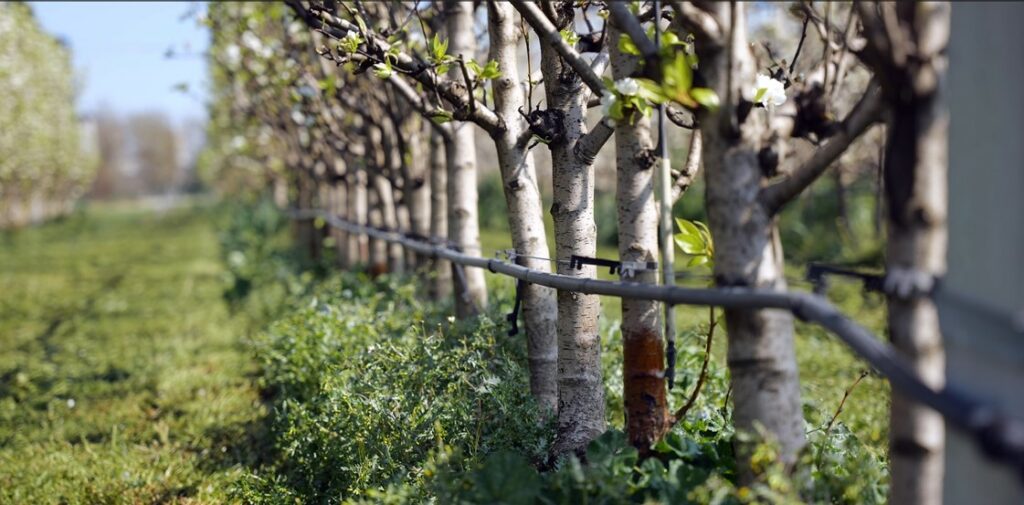
Over-head frost irrigation
Sprinkling the plants with water forms a layer of ice on their surfaces. The freezing water releases heat into the environment, increasing the air temperature, and being at zero degrees preserves the plant tissues (which usually have a freezing point below zero).
The plants must therefore be watered constantly in order to keep the ice wet and at a temperature of zero degrees, in order to prevent the ice from forming again and compromising the plants.
It’s easy to tell whether the wetting has been done correctly by looking at the ice on the plants in the morning. If the ice is transparent, its temperature never dropped below zero. If it is white, on the other hand, it has dropped below zero, and the plant will have been damaged.
Care must then be taken to ensure a continuous flow of water, so that the ice doesn’t accumulate too much, and remains wet. If the irrigation is poor, the water doesn’t run off, and instead forms overlapping layers of ice, and the weight of the ice covering the shoots can eventually break their branches and trunks.
Under-head Method: with this type of application, only the grassy inter-row area is watered, and not the crown of the trees, thus taking advantage of the heat given off by the water during the liquid to solid transition phase to counteract the loss of heat from the soil by radiation. This method is particularly suitable for Cherry, Kiwi, and Apple trees.
Over-head Method: maintain the temperature of the plants near 0°C by covering them with a continuously forming layer of ice. The protection is provided by the heat released by the water as it transforms into ice. Suitable for Apricot, Cherry, Kiwi, Apple, Pear, and Peach trees.
Strip Method: used for crops growing in narrow rows (maximum 60 cm, such as grape vines). Same principle as the over-head method, but instead of having a sprinkler above each plant, you have more powerful sprinklers to water an entire strip. The advantage lies in water savings, and greater coverage of the irrigated area. Mainly for Kiwi and Apple trees.
Thanks to its know-how, Caprari has developed various solutions and products over the years that are suitable for these specific applications; they can even be seen in action thanks to the videos recorded at various large farms, which can be found on our YouTube channel, under the playlist dedicated to agriculture.
We guarantee flexible professional solutions ideal for meeting our customers’ needs in the areas of irrigation and land reclamation; products that are designed for the delicate anti-frost irrigation process, but that can also be used for other applications, such as drawing water from underground aquifers, lakes and rivers, surface transport, and conveyance directly to the areas to be sprayed.
In particular, thanks to the quality of the production processes, the materials utilised, and our high construction tolerances, we offer a wide range of extremely reliable products specifically designed for the irrigation sector; Caprari pumps allow these installations to remain stationary even for years, with zero problems upon restarting, and with minimal need for maintenance.
The most commonly used pumps in this field are the MEC MG and MECMR series vertical pumps with electric motor and head and horizontal shaft surface pumps; these ideal anti-frost irrigation solutions are already present in large numbers throughout Italy’s Trentino-Alto Adige, Veneto, Piedmont, Emilia Romagna and Lazio regions, as well as in Spain and Portugal.
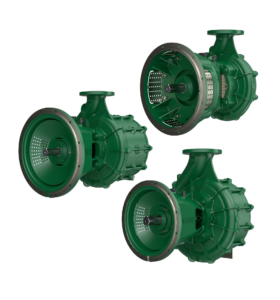
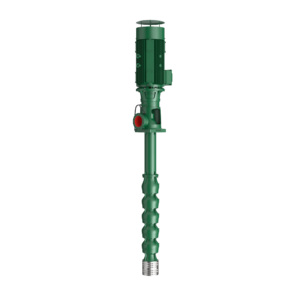
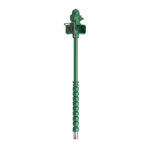
In particular, one of the most impressive projects carried out in this specific sector is the vast NEW GOLD system, which covers several parts of the Trentino region. In fact, the reservoir from which the water is drawn is activated by 4 vertical pumps, 2 surface pumps, and 5 booster sets, resulting in a reliable and high-performance system designed to protect all crops in the area.
Visit the projects section on our website and our YouTube channel to learn about the best solutions developed by Caprari in the world of agriculture.
Sign up for our newsletter to receive all the latest news and information about upcoming projects.






